This article will not discuss the legitimacy of bitcoin, nor will it explore the source of currency, but rather compare the difference between traditional currency and bitcoin.
First, start with an example
Assuming there are three people, Alice (alias A), Bob (alias B) and Carl (alias C) need to transfer money to each other in two ways:
Through banks (or third-party payment companies, but the same reason as banks, ignore them) through traditional currency
Through Bitcoin
A, B, and C each obtained 1,000 yuan in cash by using labor. In addition, one BTC was obtained through transactions with others.
Second, through the bank
Suppose A wants to transfer to B 100 yuan and B to C 50 yuan.
In the beginning, the funds of A, B and C were all in their hands and were not deposited in banks. Therefore, the banks did not have their records.
After depositing in the bank, there are three accounts A, B, and C in the bank's intermediary account system, and record the amount of money owned by A, B, and C, respectively:
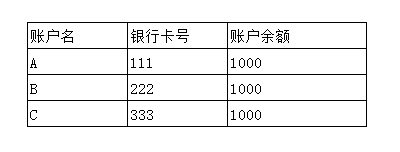
When transferring funds, A needs to transfer 100 to B's card number 222 through the bank's website or client. At this time, the bank's back end will subtract 100 from A's balance, and A's balance becomes 900, which is in B's balance. With 100 added, B's balance becomes 1100. The bank’s record at this time is:
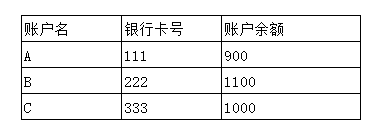
Then, B transfers 50 to C. It also initiates a request to the bank's back end. The bank's back end adds or subtracts the balance of the account according to the request. The final account balance is:

It can be seen that A, B, and C all choose to believe in the bank, they will not steal their own money, and they will not perform the transfer operation according to their own request. Here, all the data is stored in the bank's internal system.
Third, through Bitcoin
Assume that A is to be transferred to B 0.1 BTC, and B is to be transferred to C 0.1 BTC.
The first thing to be clear is that, in the Bitcoin system, strictly speaking, there are no account systems corresponding to A, B, and C, and no database records their corresponding balances, just based on the Bitcoin system, in order to facilitate the digging Mine, to quickly get a BTC that users can use, etc., added this database, without this database, the Bitcoin system can also run. Then, in the Bitcoin system, where the number of Bitcoin of A is recorded, the answer is UTXO (Unspent Transaction Output, TX stands for Transaction) in each block.
The currencies of various countries are issued by central banks of all countries, and all bitcoins are issued by mining. Now it is not necessary to understand what mining is. It is only necessary to generate bitcoins. The blockchain consists of one block and one block. There is no mystery in each block. It records the transaction information of many transactions, and the transaction is nothing more than the transfer of a BTC address to another BTC address. Bitcoin is also a kind of transaction.) At the very beginning, when A, B, and C did not have Bitcoin, they did not have any information in the Bitcoin system. Assuming Bitcoin address X was transferred to BTC to A, there was a record:
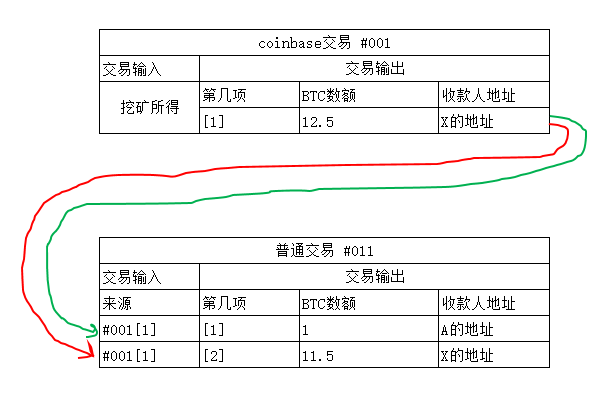
It can be seen that even if X obtained 12.5 BTCs through mining, and only needs to pay A 1 BTC, it will also need to first spend 12.5 BTCs, but only change the remaining 11.5 BTC by changing the way. Given its own address (regardless of transaction fees), the UTXO mentioned above is the output part of the transaction. This output part has not yet been spent and is called UTXO. It can be seen that a transaction can have multiple UTXOs and a UTXO can no longer be partitioned. Even if the UTXO amount is as large as 1,000 BTCs, or as small as 0.01 BTCs, when it is used for payment, it cannot be split. If it is too large and is greater than the amount of money to be paid, then change back to your own BTC address by changing the number. If it is too small and less than the amount of money to be paid, then it needs to be combined with UTXO at the same address. payment.
Bitcoin address Y has been transferred by 1 BTC to B. There are records:
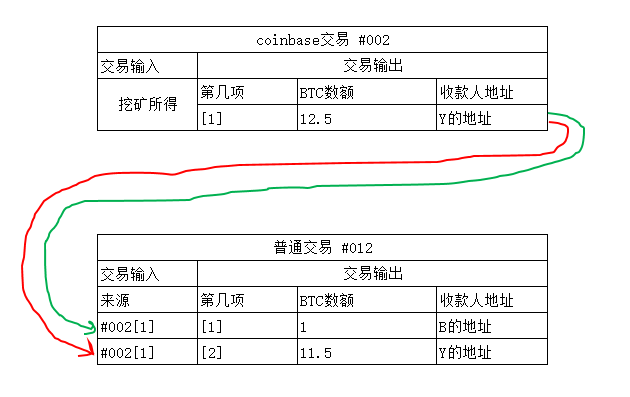
Bitcoin address Z is transferred 1 BTC to C, then there is a transaction record in Bitcoin system:
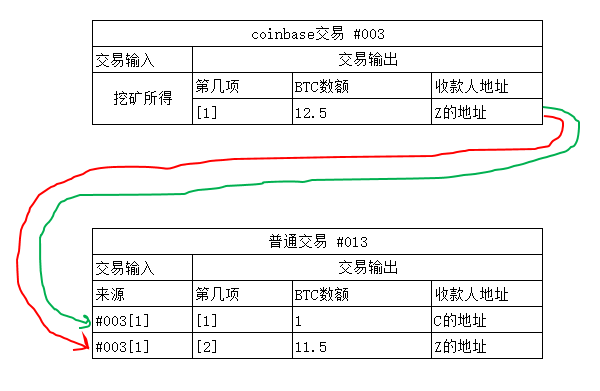
When transferring funds, the rules are similar to the above, and there is no account corresponding to A, B, and C. Only transfers from UTXO can be performed. A wants to transfer to B 0.1 BTC. At this time, A has only one UTXO, which is the UTXO corresponding to the output #1 of transaction #1 in the above figure. The amount is 1 BTC, which is greater than the 0.1 BTC that needs to be transferred, so the way to change is zero. , make a transfer, there are:
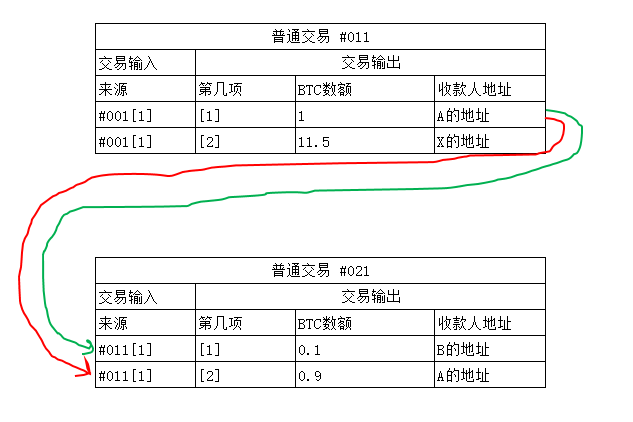
Then, B wants to transfer to C 0.1 BTC. At this time, it can be seen that the address of B corresponds to two UTXOs, which are UTXO (1 BTC) corresponding to transaction #012 output [1], and transaction #021 output [1] Corresponding UTXO (0.1 BTC), which UTXO can be selected at this time, assuming transaction #021 output [1] is selected, then there are records:
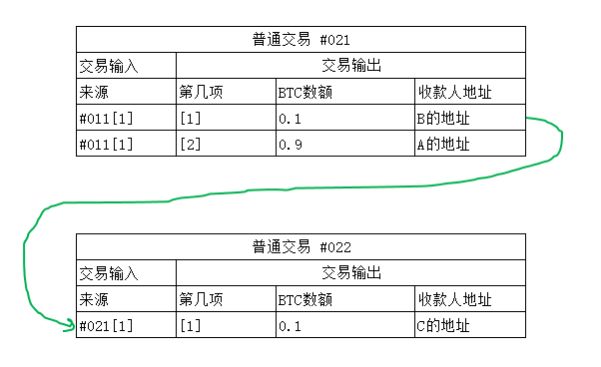
Because the amount is just enough and not redundant, there is no change (regardless of transaction fees).
Note that the above transaction information, no matter who it is, can be downloaded and viewed, there is no centralized storage location, but that on the network who want to view, you can download the view, the data is stored on many nodes, similar to using utorrent Like downloading movies, content is downloaded from other equal nodes according to certain rules.
Fourth, summary
Through the above description you can find some differences between the two:
Traditional currency is issued by central banks of various countries. Bitcoin is generated through mining.
The traditional currency transaction records are stored in a bank's own management database. Bitcoin is stored in a blockchain that everyone can download and view.
Traditional currency is based on the account system. Bitcoin strictly speaking does not have an account system but is based on UTXO.
Of course, there are other characteristics, and later slowly come.
Fiber Optic Adaptor,Fiber Adaptor,Fiber Optic Adapter Kit,Fiber Connector Adapters
Huizhou Fibercan Industrial Co.Ltd , https://www.fibercan-network.com